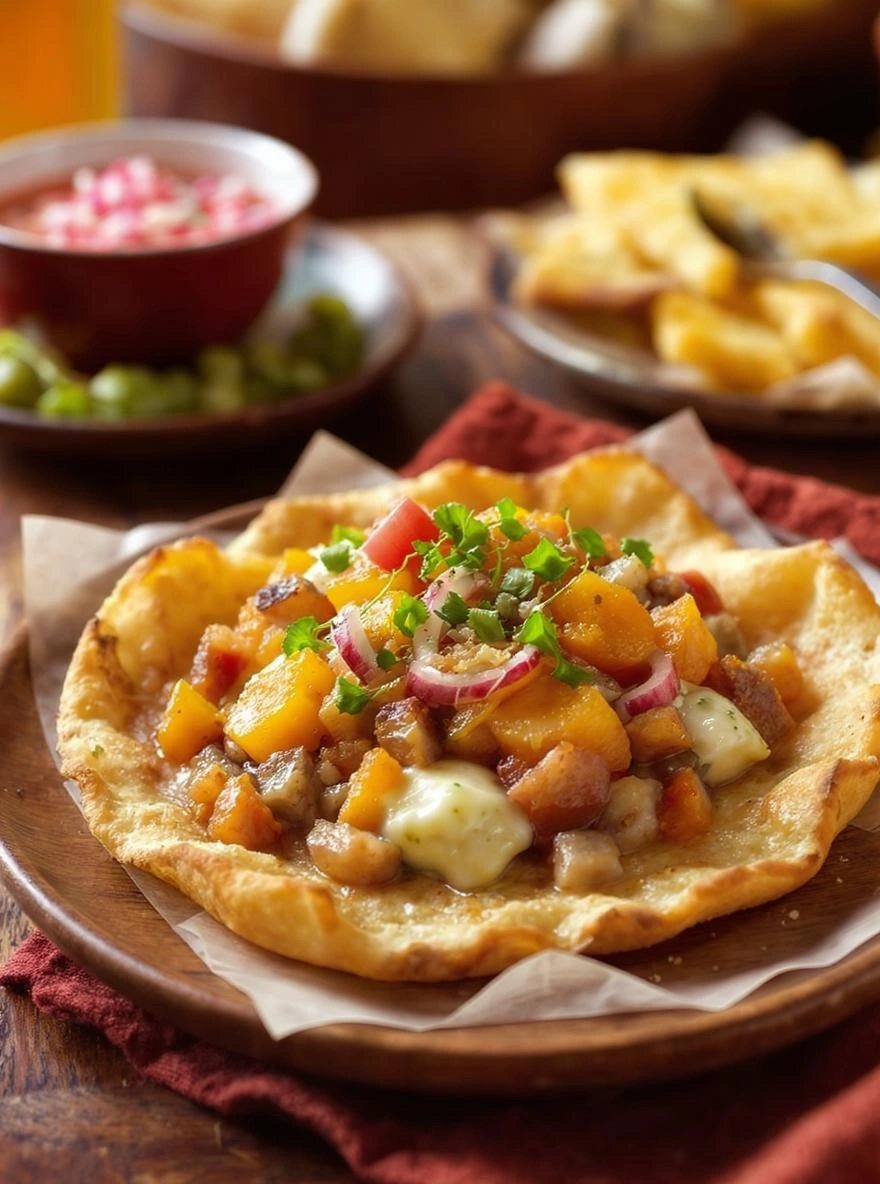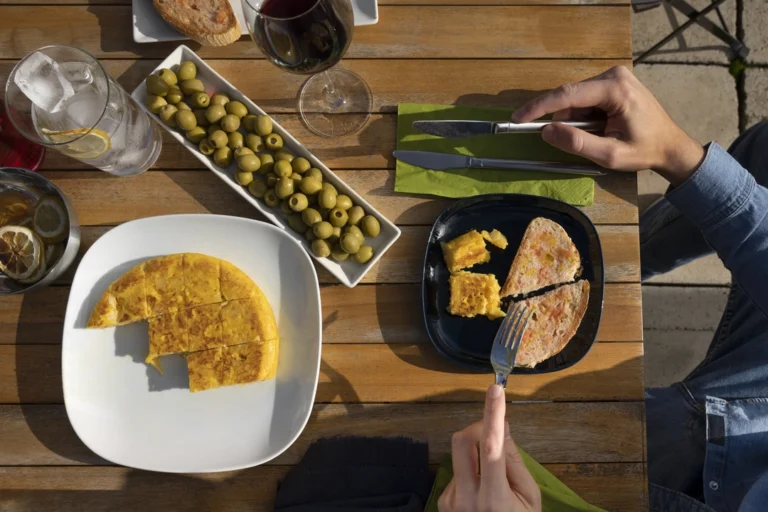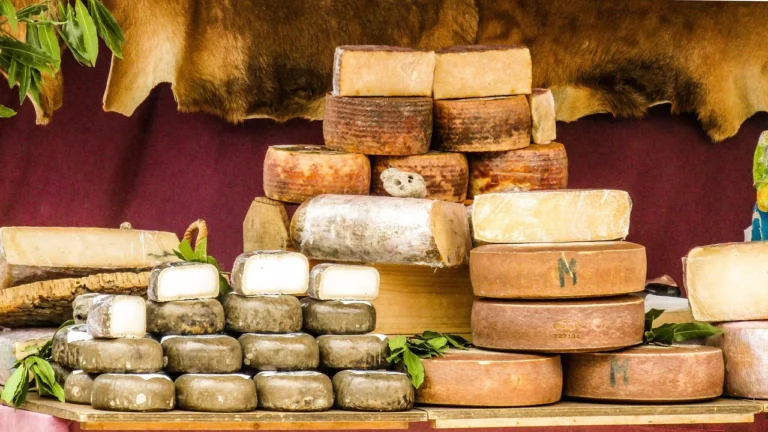Tapas in Spain: How to Eat Like a Local
Table of Contents
Why Tapas in Spain is Your Culinary Game-Changer
There’s something magical about sitting at a bustling Spanish bar, surrounded by locals, with a small plate of something delicious in front of you and a glass of wine in hand. That, my friends, is the tapas experience – and it’s absolutely unmissable when you’re in Spain.
With over 270,000 bars and restaurants across the country serving these little culinary treasures, tapas culture isn’t just a way of eating; it’s a way of life that’s deeply woven into Spain’s social fabric. For Spaniards, tapas isn’t merely food – it’s about connection, conversation, and community.
This guide will take you beyond the tourist traps to discover authentic tapas experiences, from understanding the tapas etiquette to finding the best hidden gems in cities like Seville. I’ll share tips that’ll have you tapas-hopping like a true Spaniard in no time!
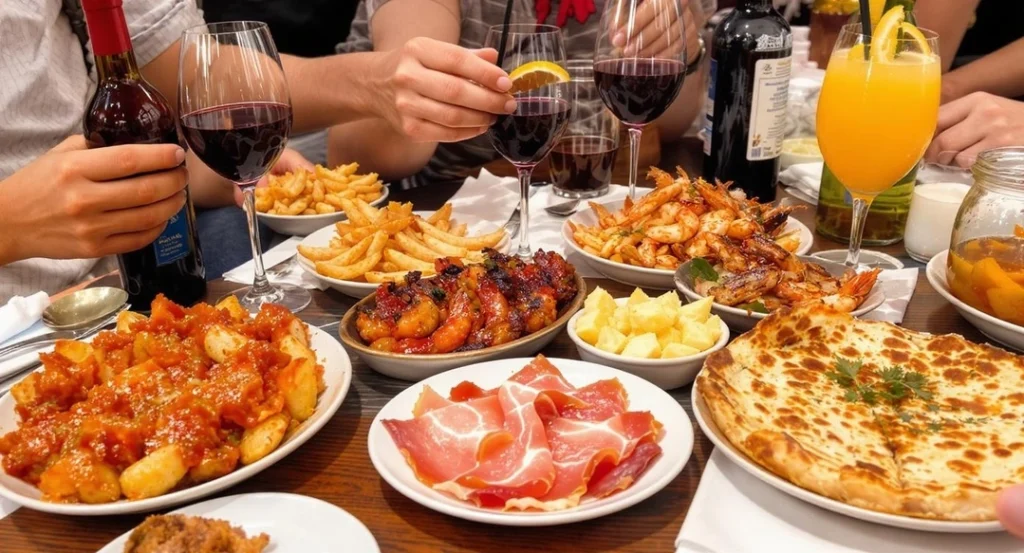
Understanding Spain’s Unique Tapas Ecosystem
A Social-First Dining Experience
Unlike many dining cultures centered around sitting down for a full meal, Spanish tapas culture is inherently social and mobile. Spaniards typically visit multiple bars in one evening, enjoying a tapa or two at each stop while catching up with friends. This “tapeo” (tapas crawl) is the heartbeat of Spanish social life.
Regional Tapas Variations
Spain’s tapas landscape is as diverse as its geography. In the north, you’ll find pintxos (tapas on bread, secured with a toothpick) in the Basque Country. Head to Andalusia, and you’ll discover tapas are often free with a drink purchase. In Seville tapas are particularly renowned for their variety and quality, with many bars specializing in specific dishes perfected over generations.
From Necessity to Culinary Art
What began as a practical solution (using bread slices to cover drinks and keep flies away – “tapar” means “to cover”) has evolved into a sophisticated culinary tradition. Today’s tapas range from simple olives and cheese to elaborate mini-dishes created by Michelin-starred chefs.
Pillar 1: Essential Tapas Etiquette for Authentic Experiences
Timing is Everything
Forget about having tapas at 6 pm – that’s for tourists! Spaniards typically start their tapas crawl around 9 pm or even later. Arriving too early is a surefire way to identify yourself as a visitor. Embrace the Spanish schedule and you’ll be rewarded with authentic atmosphere and fresher food.
Standing vs. Sitting
In traditional tapas bars, especially in Seville tapas hotspots, locals often prefer standing at the bar rather than sitting at tables. This not only lets you see what’s on offer in the display cases but also makes it easier to move on to the next spot. If you want to blend in, grab a spot at the bar and watch how the locals do it.
Ordering Like a Pro
Start with a drink order – a local beer like Cruzcampo in Andalusia or a glass of sherry in Jerez – then ask what tapas are recommended (“¿Qué tapas me recomiendas?”). Don’t order everything at once; tapas are meant to be enjoyed gradually. In some regions, especially in Seville tapas venues, you’ll need to order specifically, while in others, free tapas arrive automatically with each drink.
The All-Important Payment Protocol
In busy tapas bars, particularly in tourist areas, bartenders keep track of your consumption by writing on the bar in front of you with chalk. Don’t wipe it off! When it’s time to pay, simply ask for “la cuenta” (the bill). Tipping isn’t mandatory in Spain, but rounding up or leaving a small amount (5-10%) is appreciated for good service.
Pillar 2: Must-Try Tapas for Maximum Spanish Authenticity & Enjoyment
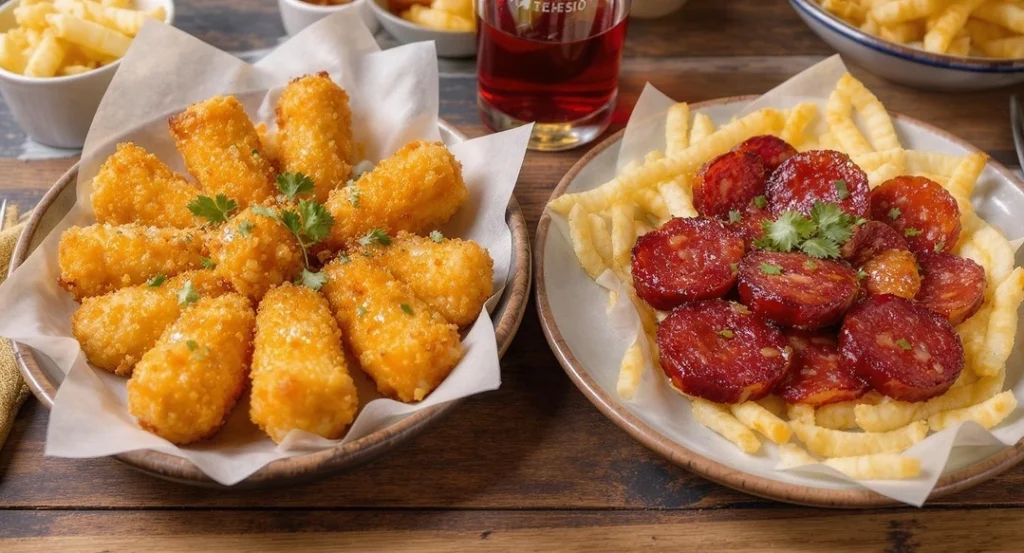
Classic Tapas Every Visitor Should Experience
Jamón Ibérico: This isn’t just ham – it’s Spain’s culinary treasure. Look for “bellota” grade from acorn-fed pigs for the ultimate experience.
Tortilla Española: A thick potato and onion omelet that’s ubiquitous across Spain. The debate over whether it should be runny inside (“jugosa”) or firm is a national obsession.
Patatas Bravas: Crispy potato cubes topped with spicy tomato sauce and creamy aioli – a staple on every tapas menu.
Gambas al Ajillo: Sizzling garlic shrimp served in a terracotta dish with olive oil and chili – absolutely heavenly when soaked up with crusty bread.
Croquetas: Creamy béchamel fritters with fillings like jamón, mushroom, or spinach – crispy outside, molten inside.
Regional Specialties Worth Seeking Out
In Seville tapas bars, don’t miss espinacas con garbanzos (spinach with chickpeas), a Moorish-influenced dish that’s especially popular during cooler months, or salmorejo, a thicker, creamier version of gazpacho topped with ham and egg.
In the Basque region, try gilda pintxos – olives, anchovies, and peppers on a skewer – named after Rita Hayworth’s character in the film “Gilda” because it’s “salty, green, and a little spicy.”
Barcelona offers bombas, potato balls with spicy beef filling and two sauces, created as a nod to the anarchist bombs of the early 20th century.
Innovative Modern Tapas
While traditional tapas remain beloved, innovative chefs are reimagining classics with modern twists. Look for molecular gastronomy tapas in upscale bars, where traditional flavors meet cutting-edge techniques. Think deconstructed tortilla served in a cocktail glass or spherified olives that burst in your mouth.
Pillar 3: Finding Authentic Tapas Bars – The Foundation for Spanish Culinary Experiences
Spotting Authenticity Signs
Authentic tapas bars often display several telltale signs: locals crowding the space, Spanish being spoken predominantly, menus only in Spanish, and perhaps most tellingly, food remnants on the floor. In traditional Spanish bars, throwing napkins and olive pits on the floor is common practice – the messier the floor, the more popular the place!
Navigating Away From Tourist Traps
As a general rule, avoid places with pictures of food outside or staff inviting you in multiple languages. Instead, look for bars without English menus (or where English is clearly an afterthought) and those located away from main tourist attractions. In Seville tapas exploration, walking just 2-3 streets away from major sites like the Cathedral can lead to dramatically more authentic experiences.
Digital Tools for Tapas Discovery
While spontaneous discovery is part of the fun, apps like El Tenedor (Spain’s version of OpenTable) or Google Maps with Spanish search terms like “tapas auténticos” or “tapas caseros” (homemade tapas) can guide you to hidden gems. Even better, download the “Seville Tapas” app for specialized recommendations from locals if you’re visiting Andalusia’s capital.
Pillar 4: City-Specific Tapas Experiences & Building Unshakeable Memories
Seville: The Tapas Capital
Seville tapas culture is arguably the most vibrant in Spain. The city boasts over 3,000 tapas bars, with concentrations in the Santa Cruz, Triana, and Alameda neighborhoods. Don’t miss Bar El Rinconcillo (Spain’s oldest tapas bar, established in 1670), Bodega Santa Cruz (known locally as “Las Columnas”), or Casa Morales for its authentic atmosphere and incredible selection of montaditos (small sandwiches).
Madrid’s Tapas Revolution
Madrid offers incredible tapas diversity, from century-old establishments to cutting-edge gastrobars. Visit Mercado de San Miguel for a one-stop tapas exploration, or dive into the La Latina neighborhood on Calle Cava Baja for a Sunday “tapeo” – a tradition for madrileños.
Barcelona’s Tapas Scene
While more famous for pintxos than tapas, Barcelona still offers incredible small-plate dining. The Born district and Barceloneta provide authentic experiences, though you’ll need to order more strategically as the “free tapa with drink” culture isn’t as prevalent here as in southern Spain.
San Sebastián: Pintxos Paradise
Though technically known for pintxos rather than tapas, San Sebastián deserves special mention for having possibly the world’s highest concentration of exceptional small-plate establishments. The Old Town’s streets are lined with bars serving elaborate, often Michelin-quality pintxos displayed beautifully along the bar.
Pillar 5: Tapas & Drinks Pairings – Elevating Your Experience
Classic Spanish Drinks for Tapas
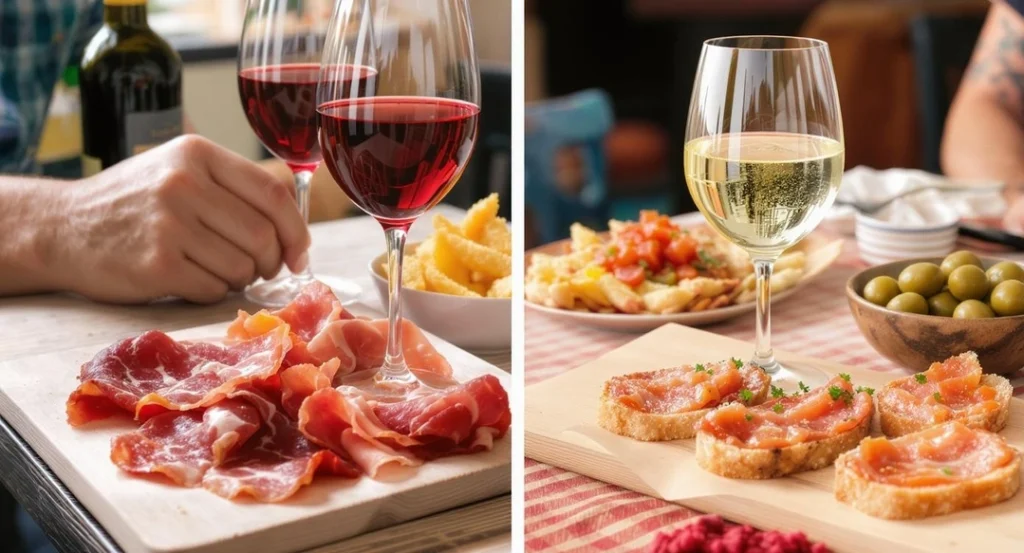
Sherry (Jerez): This fortified wine from Andalusia comes in varieties from bone-dry Fino and Manzanilla to sweet Pedro Ximénez. Pair dry sherries with seafood and jamón; sweeter styles with desserts or blue cheese.
Vermouth (Vermut): Especially popular in Madrid and Barcelona during “la hora del vermut” (vermouth hour), this aromatized wine is typically served with olives and potato chips.
Beer (Cerveza): A cold “caña” (small draft beer) is the perfect refreshing accompaniment to most tapas. Regional beers add another layer of authenticity to your experience.
Spanish Wines: From crisp Albariño from Galicia to rich Tempranillo from Rioja, regional wines naturally complement local tapas specialties.
Regional Drink Specialties
In Valencia, try Agua de Valencia – a potent cocktail of cava, orange juice, vodka, and gin that pairs surprisingly well with local tapas. In Seville tapas bars, ordering a chilled manzanilla sherry with seafood tapas is a match made in heaven.
Conclusion: Your Roadmap to Tapas Bliss in Spain
Tapas in Spain isn’t just about the food – it’s about embracing a culinary philosophy that celebrates community, conversation, and living in the moment. By understanding the etiquette, seeking authentic venues, and being adventurous with your choices, you’ll experience Spain in the most genuine way possible.
Remember that the best tapas experiences often happen spontaneously. That unremarkable-looking corner bar might just serve the most amazing croquetas you’ve ever tasted. The tiny place with the handwritten menu could become your favorite food memory of Spain.
So channel your inner Spaniard: eat late, stand at the bar, strike up a conversation with locals, and savor every bite and sip. ¡Buen provecho!

